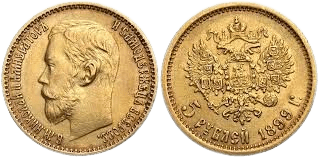Goddess of the Moon
" Goddess of the Moon from the darkest deep of time, let us drink this miraculous water, and under your powerful moon, become divine."
In many ancient cultures, the Moon was the symbol of life itself. All over the world, The Moon was honored as the source of fertility and growth. The powerful effect of the Moon is obvious. Look at how it pulls the waters around our world. And the Moon affects much more than just water. The very Earth under your feet has tidal movement that also follows the Moon. So does the air you breathe. Just as the moon causes the tides, it exerts a pull on the watery components of our bodies.
The Secret Water: Early biochemistry, pre-1950s in any case, was dominated by the study of protein structure. Proteins are very large molecules, made, generally, of different combinations of amino acids (small molecules) linked together in different sequences. The vast majority of cellular function is done through the action of proteins: catalysis of cellular respiration, construction and maintenance of cellular membranes, and, more importantly, in this case, repair of damaged cellular organelles.


There are only 20 known amino acids, and all the proteins of life are made by combinations of these 20. Proteins are so large and made of so many amino acids that there’s essentially an inexhaustible array of potential sequences. Each amino acid has a 1-letter symbol, and as such, proteins are fully denoted by this symbolism. For example, a very small protein made up of four amino acids, says alanine (a), valine (v), tryptophan (w), and phenylalanine (f), in that order, would be coded: avwf.
Even well after Watson and Crick discovered the double helix form of DNA in the mid-’50s, the link between protein and DNA was unknown. At the time of my research into the story, no one would have known this connection. However, it came to be known that a cell’s DNA holds the code that the body uses to make proteins. As such, novel lifeforms with different DNA than ours (or other DNA currently known) can create, as part of their ongoing life functions, novel proteins with new, previously unknown functions.
The reason that large pharmaceutical companies spend so much time and effort exploring unknown areas of the earth are to find lifeforms that have adapted in one way or another to use novel molecules which might hold biological functions in humans. It is reasonable to think that in a hot spring, in an isolated area in Russia, there exists, for reasons of heat, pressure, and chemical composition of the earth’s crust in the locale, an environment for bacteria to have evolved in a manner completely different than any other life form. These bacteria would certainly live in a hostile environment and may have evolved sophisticated methods of self-repair in order to safeguard their cells from the extremes in which it lives.
The bacteria would certainly, over time, lose some of this protein to the water around it, and when the bacteria die, their membranes will rupture, spilling both this protein (and everything else they make) into the water around them. It’s very plausible to think that if these protein chains were contacted and ingested by humans, their DNA repair functions might work, curing illnesses and preventing other diseases from taking hold within the cell. As an example, cancer kills by mutating DNA; a protein that could repair DNA with precision would likely cure every known form of cancer.
Such bacteria-produced proteins could be a 'cure-all' for diseased or damaged cells. Any molecule which corrects DNA abnormalities must associate itself in the cell with the DNA strand. Therefore, it could be easily tailored to cause cell death through simple variations of the DNA structure.





 Home
Home